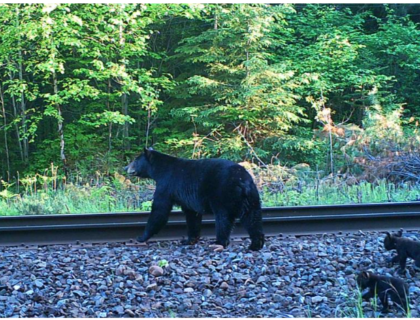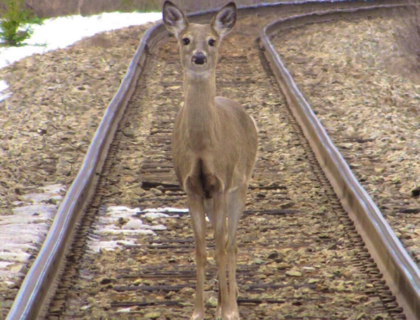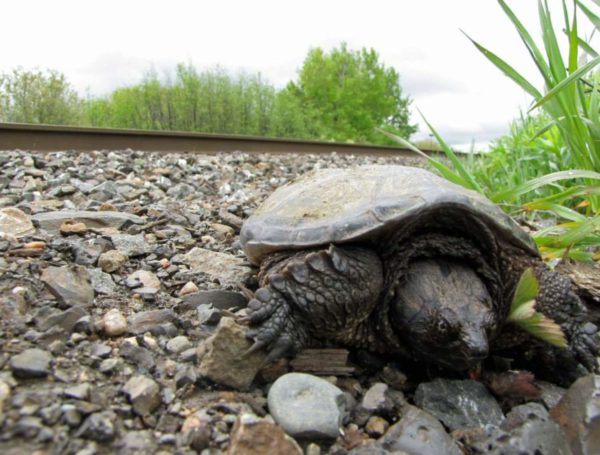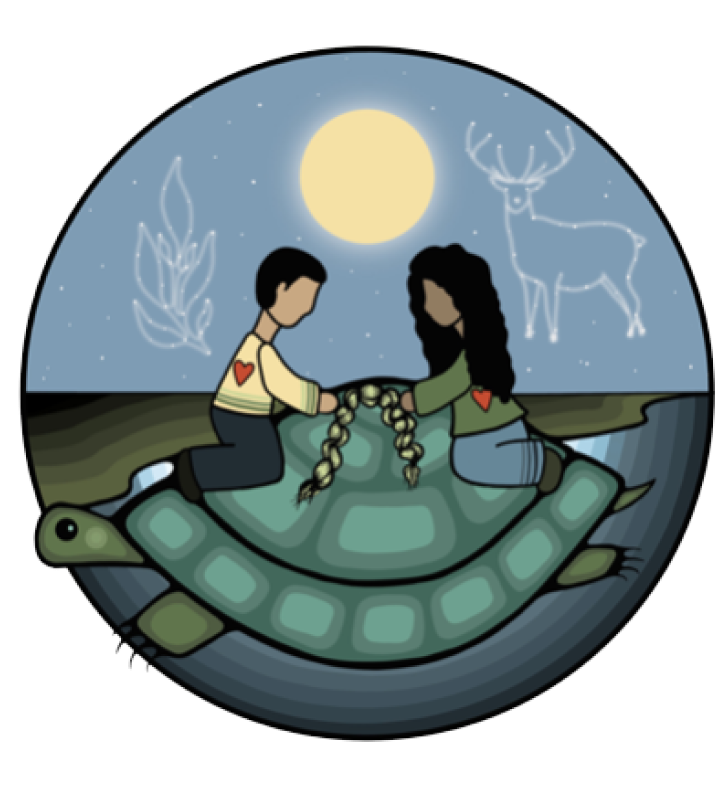Case Studies
Case Study 1: Impacts of Railways on Species at Risk
Case Study 1: Impacts of Railways on Species at Risk
For the members of Magnetawan First Nation (MFN), the railway has numerous uses. It provides access for berry picking, hunting, medicinal plant collecting, and even for recreational walking. It is through these activities that community members noticed the negative impacts railways were having on local wildlife.
“They die within the tracks and there’s lots of that going on, and I just think it has really fragmented all the area that they used to range naturally and they are a really big, really big problem for wildlife in any area with the railway lines go through there.” – Jerry Smith, Community Member (Vincent & Popp, 2020)
Noticing these impacts, community members brought their concerns forward to Dr. Jesse Popp (University of Guelph), a long-standing partner to MFN, during discussions about their primary environmental concerns. Together, it was decided a study should be created to further investigate the impact railways pose to the wildlife in MFN’s territory, with a specific focus on Species at Risk. There was also a desire to weave Indigenous knowledge from community members and western scientific methods to quantify these impacts.
Weaving Indigenous Knowledge and Western Science to Investigate the Impacts of Railways on Wildlife.
Master’s student Kyle Vincent describing his thesis project on the impacts of railways on species at risk
As the basis of the project, community members shared their concerns and knowledge of the wildlife that they had observed on the railway, including locations on a map. From these conversations, specific research questions were developed, such as: 1) which species are most impacted? and 2) when and where are these animals most likely to be killed? To answer these questions, railway surveys were designed to record and quantify mortalities. Kyle Vincent, a Master’s student at Laurentian and Guelph universities, along with youth from MFN walked 3.5 km transects of the railway, noting how many live animals they saw, how many fatalities they encountered, and the environmental conditions in the areas of those sightings.
This project is on-going (as of Spring 2022), but has already documented a lot of mortalities on the railways, especially of turtles. In this region of Ontario, every native turtle species is currently listed as a Species at Risk. The impacts of railways often go unnoticed because they are mainly in remote areas and have limited-to-no foot traffic. When collisions are noticed, it is usually with larger animals like bears and moose. Therefore, without the observations and concerns of MFN community members, who live nearby and use the land, these impacts to turtles – a species at risk – may have never been considered. This also raises the questions of how many more turtle or other wildlife populations are being impacted the same way? How many more species at risk who need protecting are unknowingly perishing on railways?


This study was completely community driven, grounded in local knowledge, but used western scientific methods (railway surveys) to further investigate community concerns and providing a bigger picture of the issue at hand. Indigenous knowledge was used to identify the concerns, design the research study, provide context and location of where the study should take place based on personal observations, and surveys were used to quantify impacts on wildlife and, in the future, determine environmental “hot spots” for mortalities in hopes of mitigate these impacts.
“The part of this research that I found the most fulfilling is really just working with the community and being able to do a project that was community driven, community initiated. I’m there to help conduct the work but being able to work with the community and identify and try to solve problems they have identified is very fulfilling”- Kyle Vincent, MSc Student
Source: Vincent, K. and J.N. Popp. 2020. Railway ecology and impacts to wildlife: An Indigenous Knowledge Study with Magnetawan First Nation. WISE Lab. Pp.17.

Image Credit Jesse Popp




